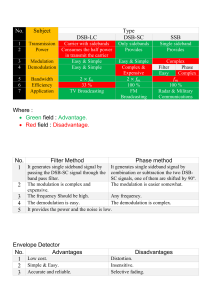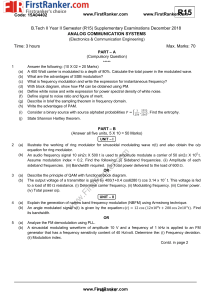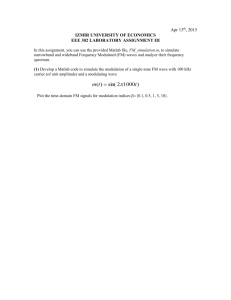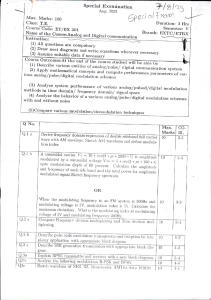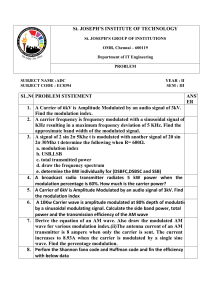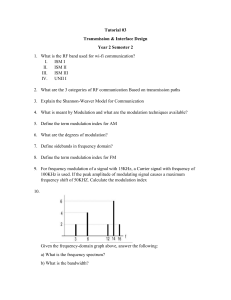AM Modulation Exam Questions: Radio Communication
advertisement
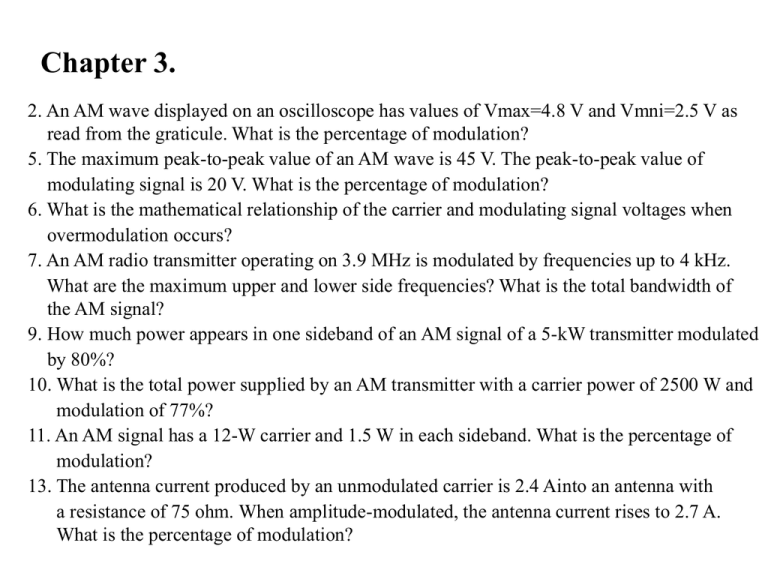
Chapter 3. 2. An AM wave displayed on an oscilloscope has values of Vmax=4.8 V and Vmni=2.5 V as read from the graticule. What is the percentage of modulation? 5. The maximum peak-to-peak value of an AM wave is 45 V. The peak-to-peak value of modulating signal is 20 V. What is the percentage of modulation? 6. What is the mathematical relationship of the carrier and modulating signal voltages when overmodulation occurs? 7. An AM radio transmitter operating on 3.9 MHz is modulated by frequencies up to 4 kHz. What are the maximum upper and lower side frequencies? What is the total bandwidth of the AM signal? 9. How much power appears in one sideband of an AM signal of a 5-kW transmitter modulated by 80%? 10. What is the total power supplied by an AM transmitter with a carrier power of 2500 W and modulation of 77%? 11. An AM signal has a 12-W carrier and 1.5 W in each sideband. What is the percentage of modulation? 13. The antenna current produced by an unmodulated carrier is 2.4 Ainto an antenna with a resistance of 75 ohm. When amplitude-modulated, the antenna current rises to 2.7 A. What is the percentage of modulation? Chapter 4. 3. Describe the two basic ways in which amplitude modulator circuits generate AM. 4. What type of semiconductor device gives a near-perfect square-law response? 8. What kind of amplifier must be used to boost the power of a low-level AM signal? 12. What is the most critical component value in a diode detector circuit? Explain. 17. What is the most difficult part of producing SSB for voice signals by using the phasing methods? C1. State the relative advantages and disadvantage of synchronous detectors versus other types of amplitude demodulator.

